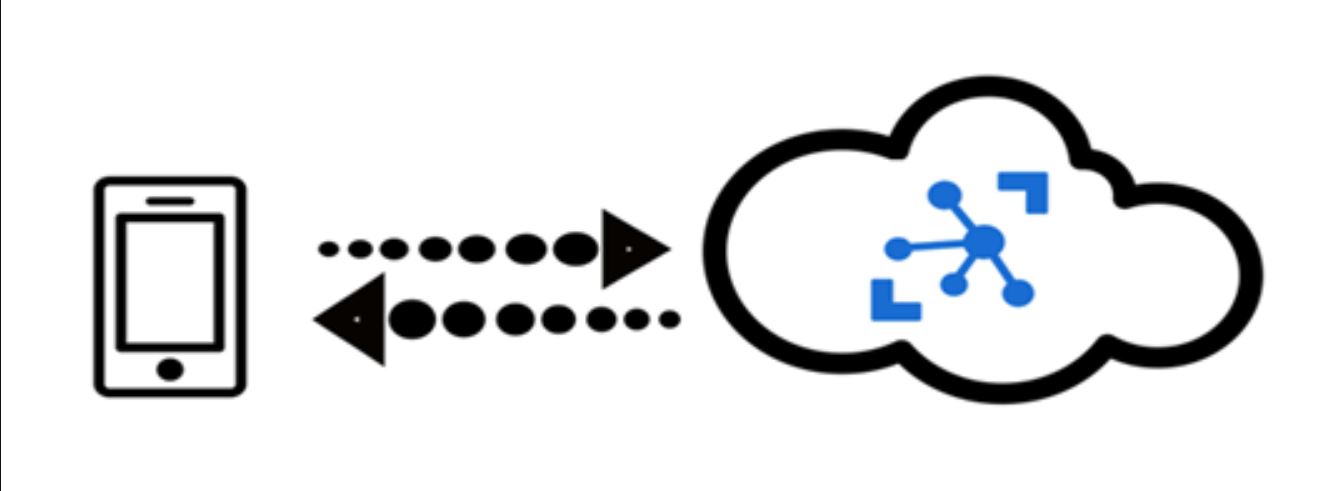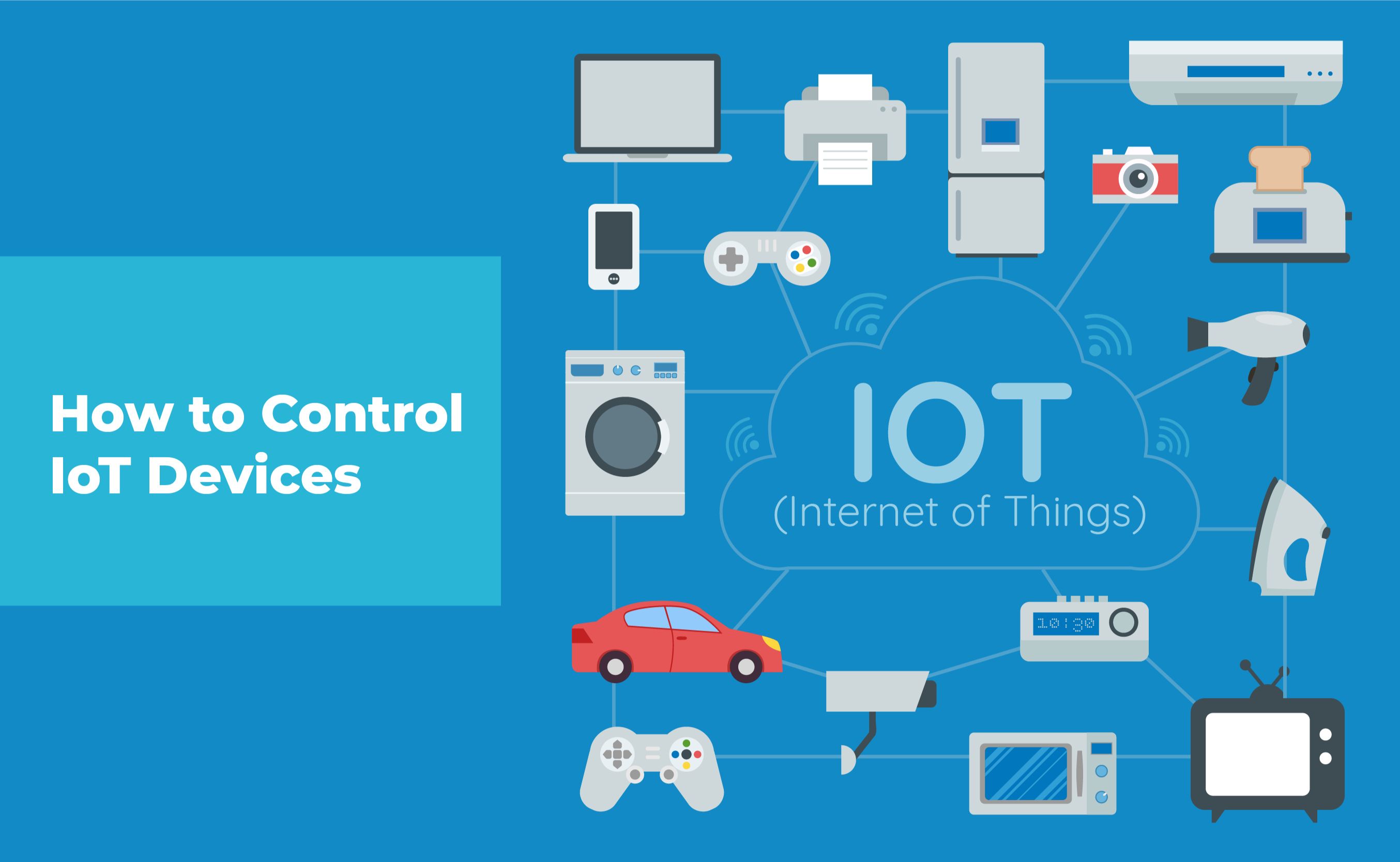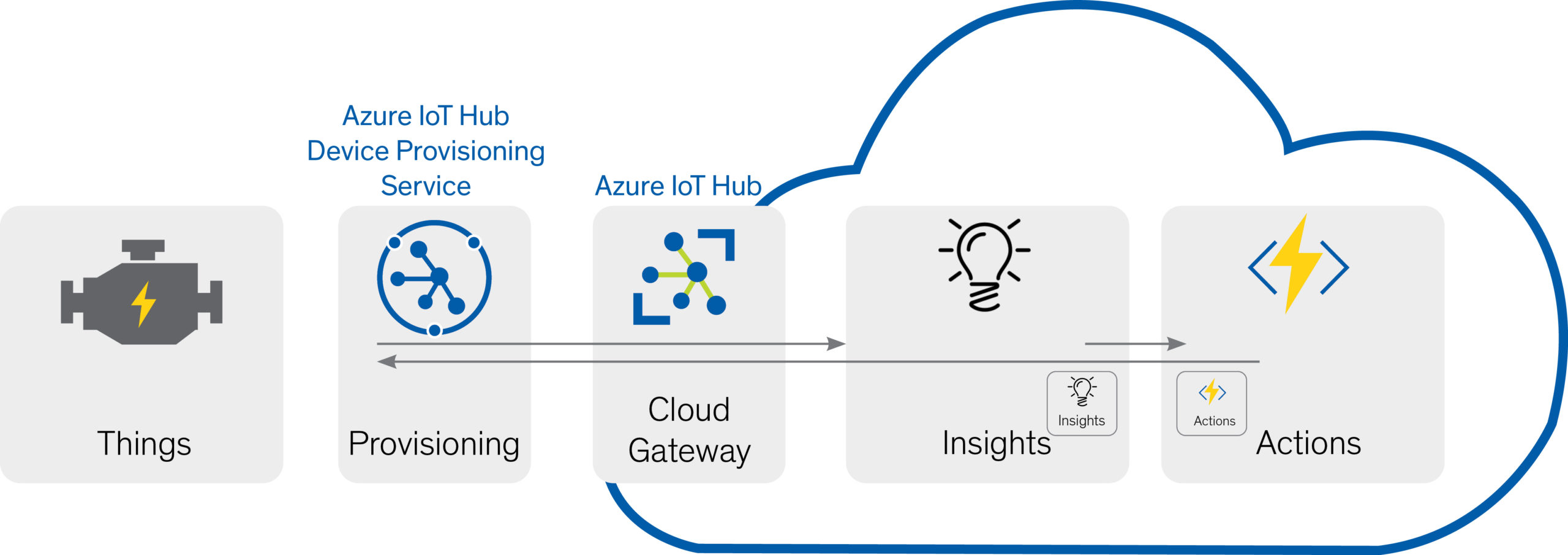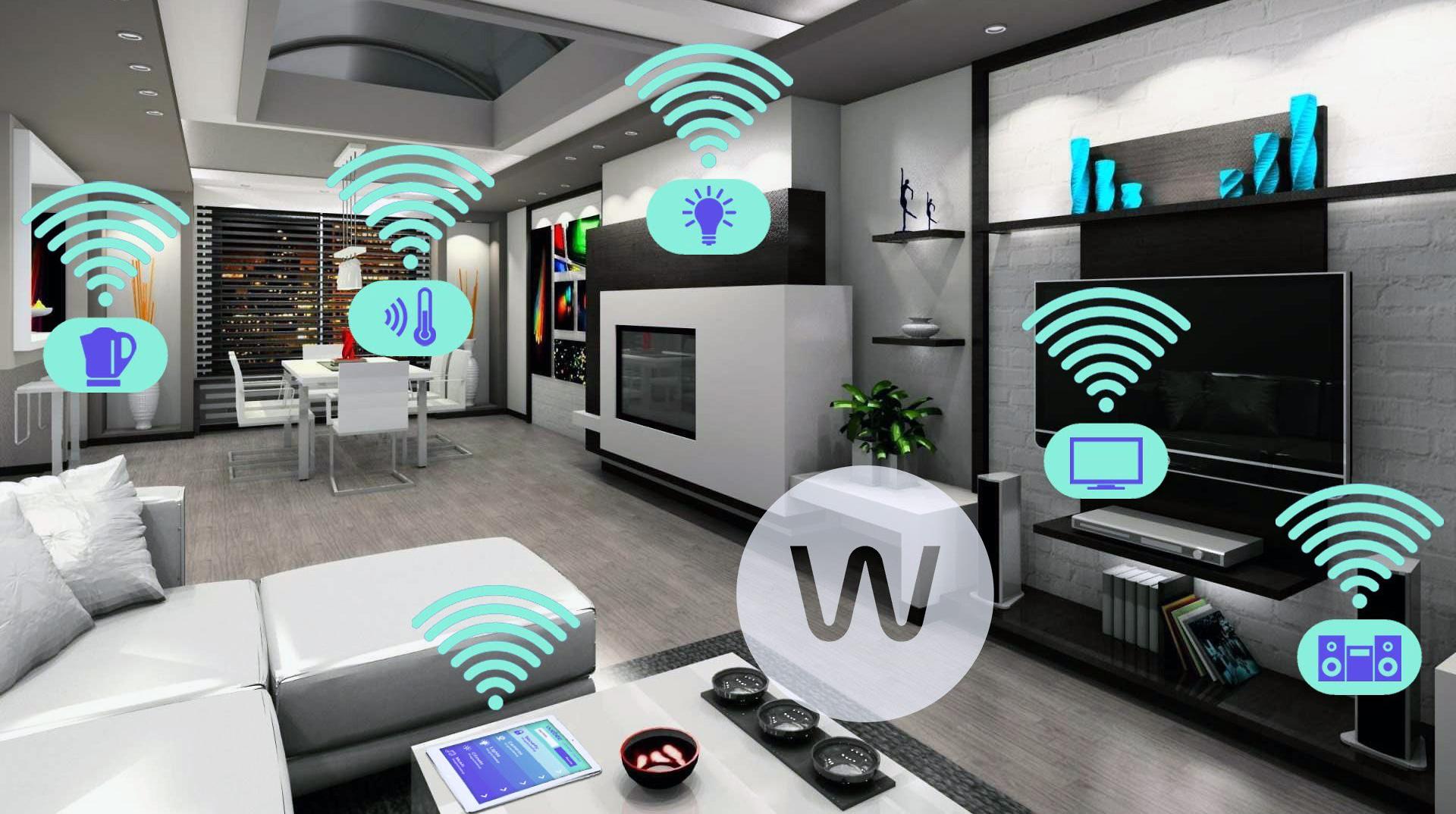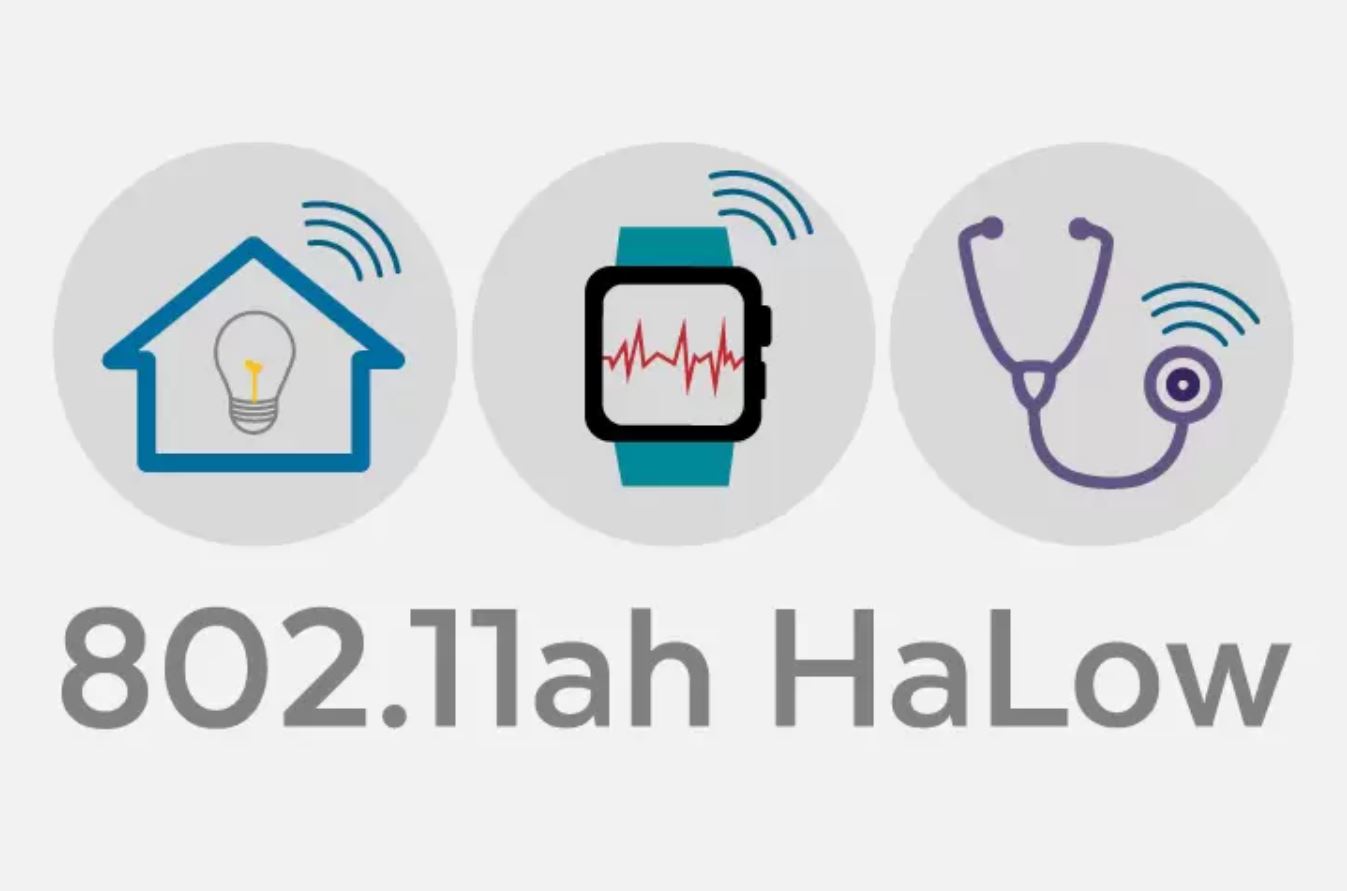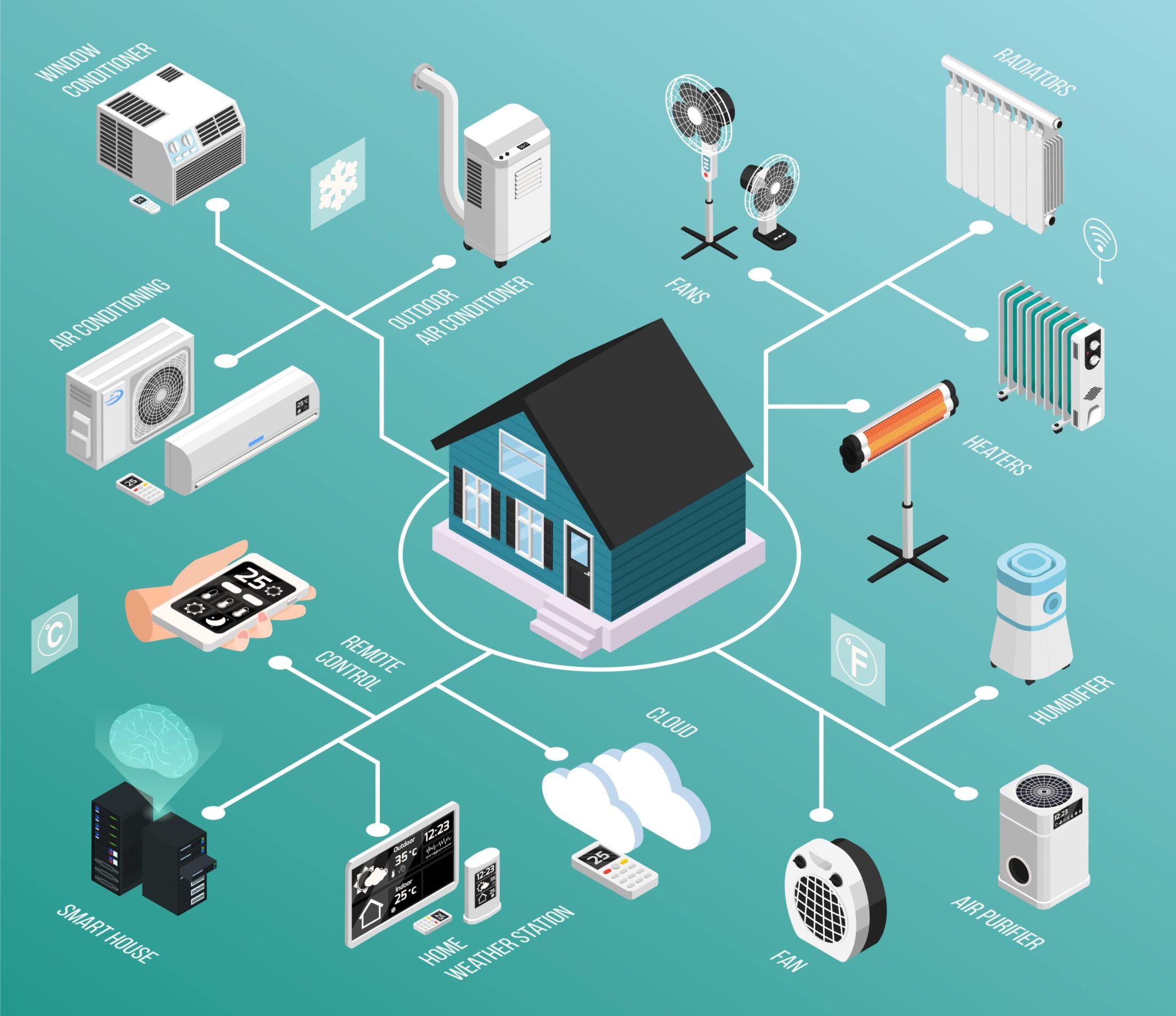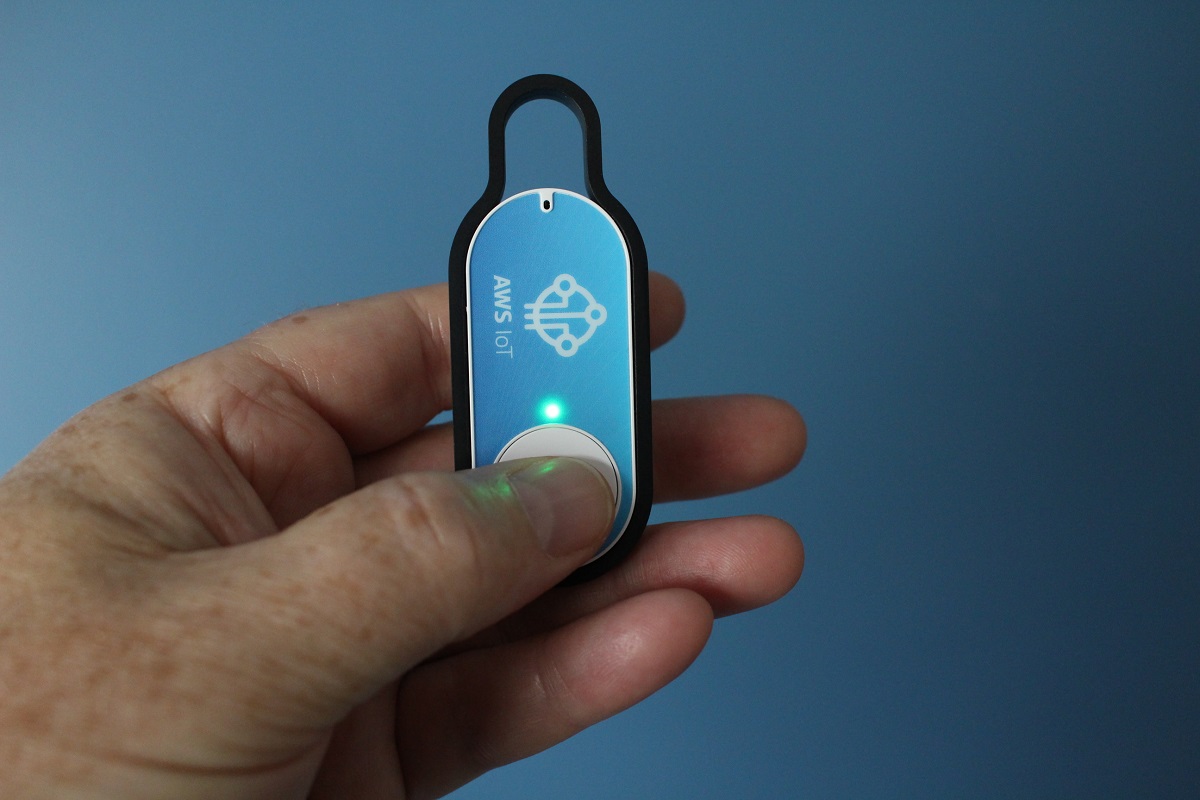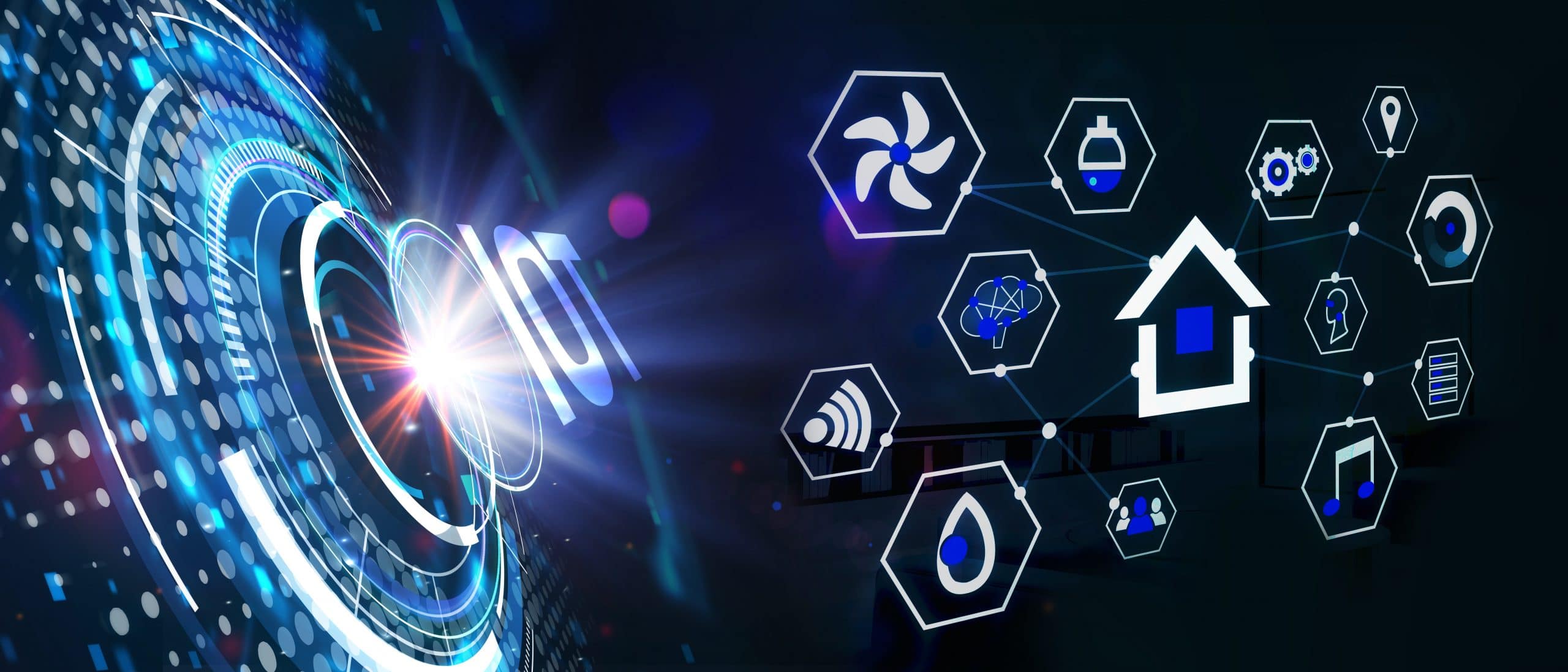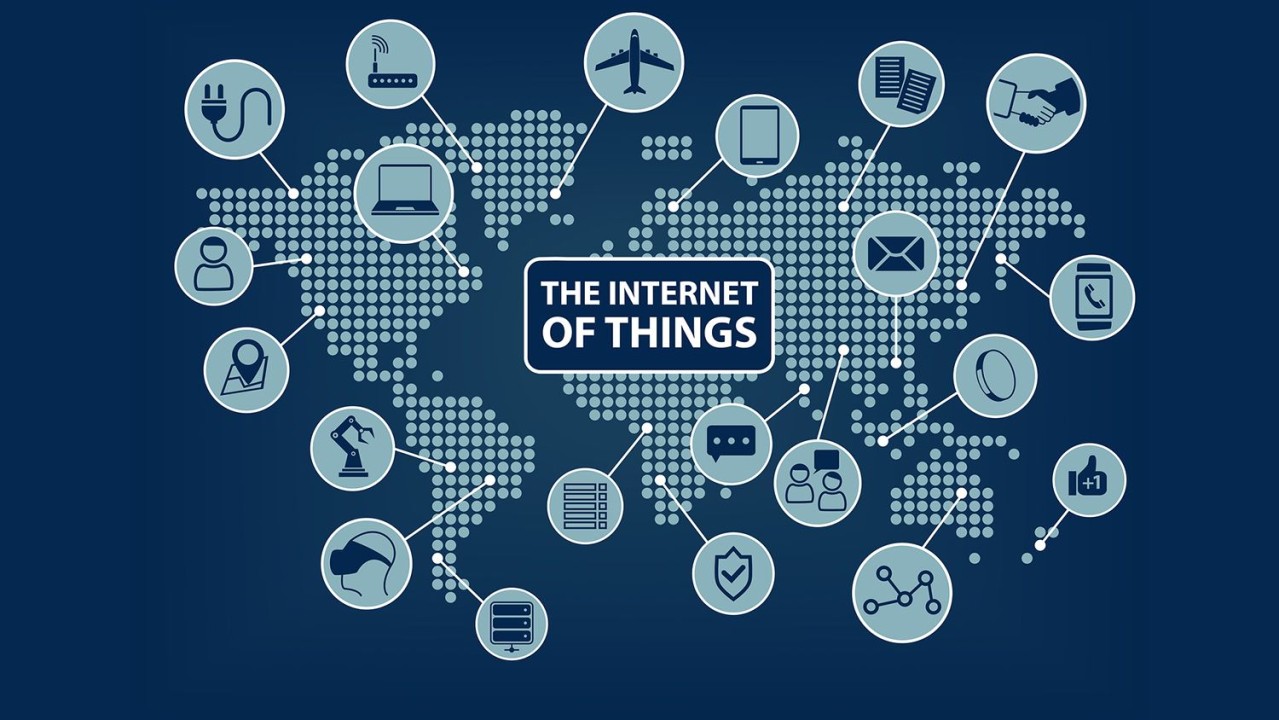Introduction
Welcome to the world of IoT (Internet of Things) Hub, where the digital and physical realms merge to create groundbreaking opportunities for businesses and individuals alike. As technology continues to advance at an unprecedented pace, the IoT Hub has emerged as a critical component in connecting and managing devices, enabling seamless communication, and unlocking endless possibilities.
The IoT Hub serves as a central platform that facilitates the exchange of data between interconnected devices, providing a foundation for creating intelligent systems and driving innovation across industries. From smart homes and wearable devices to industrial automation and transportation, the IoT Hub is paving the way for a more connected and efficient future.
At its core, the IoT Hub acts as a bridge, allowing devices to securely transmit and receive data, facilitating real-time monitoring, control, and analysis. By seamlessly integrating various hardware components, software applications, and network infrastructure, the IoT Hub enables businesses to harness the power of data and make informed decisions that drive growth and productivity.
The IoT Hub plays a crucial role in shaping the digital transformation landscape by empowering organizations to optimize operations, improve efficiency, and enhance customer experiences. With its ability to collect and process data from numerous sources, the IoT Hub empowers businesses to gain valuable insights, automate processes, and deliver personalized services.
Furthermore, the IoT Hub fosters collaboration between different stakeholders, including device manufacturers, solution providers, and developers. By providing standardized protocols and APIs, it simplifies the integration and interoperability of devices and systems, fostering an ecosystem of connected devices that work seamlessly together.
In this article, we will delve deeper into the concept of the IoT Hub, exploring its core components, functionality, benefits, and security features. Additionally, we will explore real-world use cases that highlight the immense potential of the IoT Hub in driving transformative change across industries.
Definition of IoT Hub
IoT Hub, short for Internet of Things Hub, can be defined as a central platform or infrastructure that enables the communication, management, and coordination of devices and data in the Internet of Things ecosystem. It acts as a bridge between devices, applications, and users, facilitating the seamless exchange of information and enabling the creation of intelligent systems.
Essentially, an IoT Hub serves as a gateway that connects various IoT devices, such as sensors, actuators, wearables, and smart appliances, to the internet and allows them to interact with each other and with cloud-based services. It acts as a mediator, collecting data from connected devices, organizing and analyzing it, and enabling actions or responses to be taken based on the received information.
One of the key functions of an IoT Hub is to provide a unified interface for managing and controlling distributed devices. It offers features such as device registration, identification, and authentication, allowing administrators to securely onboard and manage a large number of devices from a central location.
Furthermore, an IoT Hub enables bidirectional communication between devices and the cloud, allowing devices to send data to and receive commands or updates from cloud-based applications. It provides a reliable and scalable infrastructure to handle the massive volume of data generated by IoT devices, ensuring the seamless flow of information between devices and applications.
Another important aspect of an IoT Hub is its ability to support heterogeneous devices and protocols. It allows devices that use different communication protocols, such as MQTT, HTTP, or AMQP, to connect and communicate with each other. This interoperability ensures that devices from various manufacturers can seamlessly work together and share data without compatibility issues.
In summary, an IoT Hub is a central platform that connects devices, enables data exchange, and facilitates the management and coordination of devices and applications in the Internet of Things ecosystem. It serves as a crucial component in unlocking the potential of IoT by providing a scalable infrastructure, security features, and interoperability, ultimately enabling businesses to harness the power of connected devices and drive innovation.
How Does IoT Hub Work
The IoT Hub operates on a fundamental principle of connecting devices, enabling data exchange, and facilitating secure communication between devices and cloud-based applications. Here’s a breakdown of how an IoT Hub works:
- Device Connection: IoT devices, equipped with sensors and actuators, establish a connection with the IoT Hub using various communication protocols, such as MQTT or HTTP. These devices can be anything from industrial machinery and smart home devices to wearables and environmental sensors.
- Data Ingestion: Once connected, the IoT Hub collects data generated by these devices. This data can include sensory information, operational metrics, or any other relevant measurements. The IoT Hub acts as a gateway, capturing, and organizing this vast amount of data for further processing and analysis.
- Data Processing: The collected data is then processed within the IoT Hub to transform it into meaningful insights. This can involve filtering and aggregating data, performing real-time analytics, or applying machine learning algorithms to gain valuable insights and enable intelligent decision-making.
- Secure Data Transmission: One of the critical functions of an IoT Hub is to ensure the secure transmission of data. It encrypts the data, making use of robust security protocols, such as TLS (Transport Layer Security), to protect it from unauthorized access or tampering during transmission over the internet.
- Cloud Integration: The processed data can be seamlessly forwarded to cloud-based applications and services for further analysis, storage, or visualization. The IoT Hub acts as a bridge between the devices and cloud infrastructure, allowing for seamless integration and interaction between the two.
- Device Management: The IoT Hub provides essential features for device management, such as device registration, identification, and authentication. It enables administrators to remotely manage and control devices, update firmware or software, monitor device health, and perform diagnostics.
- Command and Control: Through the IoT Hub, cloud-based applications can send commands or updates to the connected devices. These commands can trigger specific actions on the devices, enabling remote control and automation of various processes.
Overall, an IoT Hub acts as a centralized hub that connects devices, enables data ingestion and processing, ensures secure data transmission, integrates with cloud-based applications, and provides device management capabilities. It forms the backbone of the Internet of Things ecosystem, allowing for the seamless flow of data and enabling organizations to achieve operational efficiency, optimize resource utilization, and drive innovation in various industries.
The Core Components of IoT Hub
An IoT Hub consists of several core components that work together to enable the seamless communication and management of devices. Let’s explore these key components:
- Devices: Devices are the fundamental building blocks of an IoT Hub. These can be sensors, actuators, wearables, or any other physical objects capable of generating or receiving data. Devices connect to the IoT Hub to interact with other devices or cloud-based applications, enabling data exchange and control.
- Device Twins: Device Twins are virtual representations of individual devices within the IoT Hub. They store metadata, configurations, and state information of devices. Device Twins enable synchronization and coordination between the physical device and the cloud, allowing for seamless communication and remote management of devices.
- Message Routes: Message Routes define the paths that data messages take within the IoT Hub. They specify how and where the received data should be routed for further processing or storage. Message Routes provide flexibility in data handling, allowing for real-time analytics, storage in data lakes, integration with external systems, or forwarding to other services for additional processing.
- Event Hubs: Event Hubs are scalable and highly reliable data streaming platforms provided by IoT Hub. They enable the ingestion of high volumes of data generated by devices, ensuring quick and efficient processing. Event Hubs can handle real-time data streaming, making it ideal for scenarios that require instant data insights and low-latency processing.
- Security Modules: Security is a critical aspect of any IoT system, and IoT Hub provides various security modules to ensure secure communication and data protection. These modules include device authentication, access control policies, data encryption, certificate management, and threat detection mechanisms. By implementing these security measures, IoT Hub safeguards sensitive data and protects against unauthorized access or intrusion.
- Integration Services: IoT Hub offers integration services that facilitate seamless integration with other Azure services and third-party applications. These services include connectors, adapters, and APIs that enable data interoperability, integration with cloud-based platforms, and seamless connectivity with external systems. Integration services enhance the capabilities of the IoT Hub, allowing for extended functionality and integration with existing infrastructure.
- Data Storage: IoT Hub provides storage options for both real-time and historical data. Real-time data can be processed and stored in Azure Cosmos DB or Azure SQL Database for quick access and analysis. Historical data can be stored in Azure Blob Storage or Azure Data Lake Storage for long-term storage and analytics purposes. These storage options allow for efficient data management and retrieval, supporting data-driven insights and decision-making.
- Scalability and Monitoring: The IoT Hub is designed to scale and handle large-scale deployments with ease. It offers features for automatic scaling and load balancing, ensuring high availability and optimal performance. Additionally, IoT Hub provides robust monitoring and diagnostics capabilities, allowing administrators to gain insights into device health, operational metrics, and performance, enabling proactive management and troubleshooting.
These core components of an IoT Hub work together harmoniously to create a robust and scalable infrastructure that enables seamless device communication, data management, and secure integration with other services. By leveraging these components, organizations can unlock the full potential of IoT, drive innovation, gain valuable insights, and optimize operations across various industries.
Benefits of Using IoT Hub
The adoption of an IoT Hub brings numerous benefits to businesses and individuals, revolutionizing the way we interact with technology and enabling the creation of innovative solutions. Here are some key benefits of using an IoT Hub:
- Improved Efficiency: IoT Hub enables organizations to streamline operations and enhance efficiency by connecting and monitoring devices in real-time. This allows for proactive maintenance, remote diagnostics, and optimized resource allocation, resulting in reduced downtime, improved productivity, and cost savings.
- Enhanced Decision-Making: With real-time data collection and analysis capabilities, an IoT Hub empowers organizations to make data-driven decisions. By gaining insights into operational performance, customer behavior, and market trends, businesses can respond quickly to changing demands, identify opportunities, and drive strategic decision-making.
- Increased Automation: IoT Hub facilitates the automation of various processes, reducing manual intervention and improving operational efficiency. By integrating devices, systems, and cloud-based applications, organizations can automate routine tasks, enable remote control, and optimize workflows, leading to increased productivity and reduced human error.
- Enhanced Customer Experience: IoT Hub enables businesses to deliver personalized and timely services to their customers. By leveraging data from connected devices, organizations can gain valuable insights into customer preferences, behavior, and usage patterns. This allows for the customization of products, services, and experiences, resulting in improved customer satisfaction and loyalty.
- Optimized Resource Management: IoT Hub enables efficient management of resources through real-time monitoring and data-driven insights. Organizations can optimize energy consumption, predict maintenance needs, and allocate resources effectively, leading to reduced waste, improved sustainability, and cost savings.
- Improved Safety and Security: IoT Hub provides robust security features to protect sensitive data and ensure the integrity of device communication. With features such as device authentication, data encryption, and access control, organizations can mitigate security risks, safeguard critical infrastructure, and protect against unauthorized access or data breaches.
- Scalability and Flexibility: IoT Hub offers scalability to accommodate growing device deployments and changing business needs. It can handle millions of devices, ensuring seamless connectivity and data management. Additionally, IoT Hub provides flexibility in integrating with existing systems and third-party applications, allowing organizations to leverage their existing infrastructure.
- Innovation and New Opportunities: IoT Hub opens up a world of possibilities for innovation and transformative solutions. By connecting devices and leveraging data, organizations can uncover new insights, develop new products or services, and explore novel business models. IoT Hub empowers businesses to embrace digital transformation and stay ahead in the rapidly evolving technological landscape.
These benefits demonstrate the immense value that an IoT Hub brings to businesses and individuals, driving improved efficiency, enhanced decision-making, increased automation, and a superior customer experience. By harnessing the power of IoT Hub, organizations can unlock new opportunities, drive innovation, and create a connected and intelligent future.
Security Features of IoT Hub
Ensuring robust security is crucial when implementing IoT solutions, and an IoT Hub provides a range of security features to protect against potential threats and vulnerabilities. Here are some of the key security features of an IoT Hub:
- Device Authentication: IoT Hub offers device authentication mechanisms that verify the identity of devices connecting to the hub. This ensures that only authorized and trusted devices can establish a connection, preventing unauthorized access or rogue devices from compromising the network.
- Access Control Policies: IoT Hub allows granular control over access to devices and data through access control policies. Administrators can define different levels of access based on roles and permissions, ensuring that only authorized individuals or applications can interact with the IoT devices and access the data.
- Data Encryption: IoT Hub provides industry-standard encryption protocols, such as TLS (Transport Layer Security), to encrypt data in transit between devices and the cloud. This protects the integrity and confidentiality of data, preventing eavesdropping or tampering during transmission.
- Certificate Management: IoT Hub supports the use of X.509 certificates for device authentication. It provides a secure infrastructure for managing device certificates, including certificate lifecycle management, revocation, and renewal. This ensures that devices connecting to the hub possess valid and trusted certificates.
- Firewall Rules: IoT Hub allows the implementation of firewall rules to restrict access to devices and the hub itself. Administrators can define rules based on IP addresses or subnets, ensuring that only authorized entities can communicate with the IoT devices or access the hub’s management interfaces.
- Threat Detection: To detect and mitigate potential security breaches, IoT Hub offers built-in threat detection mechanisms. It monitors activity logs and alerts administrators of any suspicious activities, unauthorized access attempts, or anomalous behaviors within the hub. This enables proactive responses and safeguards against potential threats.
- Secure Device Updates: IoT Hub provides secure over-the-air (OTA) update capabilities for devices. It enables administrators to remotely update firmware or software on devices, ensuring the deployment of security patches and bug fixes without physical access to the devices.
- IP Filtering: IoT Hub supports IP filtering to allow or deny connections based on IP addresses or IP ranges. This adds an extra layer of security by only permitting connections from trusted IP addresses, preventing unauthorized access or potential attacks from malicious sources.
By leveraging these security features, an IoT Hub strengthens the overall security posture of an IoT solution. It enables organizations to protect sensitive data, guard against unauthorized access or data breaches, and ensure the integrity of device communication. With robust security measures in place, businesses can confidently embrace the benefits of IoT while maintaining a secure and trustworthy environment.
Use Cases for IoT Hub
The versatility and scalability of an IoT Hub make it applicable to various industries and use cases. Let’s explore some notable use cases where the IoT Hub has transformed processes and created new opportunities:
- Smart Home Automation: IoT Hub enables seamless integration and control of smart home devices, such as thermostats, lighting systems, security cameras, and appliances. Homeowners can remotely monitor and control these devices through a central hub, enhancing energy efficiency, security, and convenience.
- Industrial Automation: In industrial settings, IoT Hub plays a crucial role in optimizing production processes, equipment maintenance, and resource utilization. By connecting machinery, sensors, and advanced analytics, organizations can automate data collection, reduce downtime, and improve operational efficiency.
- Smart Cities: IoT Hub contributes to the development of smart cities by connecting various aspects of urban infrastructure, including transportation, waste management, utilities, and public safety. It enables real-time monitoring, efficient resource allocation, and data-driven decision-making to enhance sustainability, safety, and quality of life.
- Healthcare Monitoring: IoT Hub facilitates remote patient monitoring, enabling healthcare providers to gather real-time health data and monitor patients outside of the traditional clinical setting. This improves patient care, enables early detection of health issues, and reduces the need for hospital visits, particularly for individuals with chronic conditions.
- Supply Chain Optimization: IoT Hub helps optimize supply chain processes by enabling real-time tracking, monitoring, and analytics of goods in transit. It improves visibility and transparency, streamlines logistics, reduces inefficiencies, and enhances overall supply chain management.
- Environmental Monitoring: IoT Hub powers environmental monitoring systems by connecting sensors and devices that measure air quality, water quality, noise levels, and other environmental parameters. This data helps governments and organizations make informed decisions to reduce pollution, improve sustainability, and ensure public health.
- Precision Agriculture: In the agriculture industry, IoT Hub enables the implementation of precision farming techniques. By connecting sensors, drones, and farming machinery, farmers can monitor soil conditions, optimize irrigation, and apply targeted fertilization, leading to improved crop yields, reduced resource waste, and minimized environmental impact.
- Smart Energy Management: IoT Hub facilitates intelligent energy management by connecting devices such as smart meters, energy monitors, and grid management systems. It enables real-time monitoring, load balancing, and demand response mechanisms, helping organizations and consumers optimize energy consumption and reduce costs.
These use cases illustrate the versatility and transformative potential of an IoT Hub in enhancing efficiency, enabling automation, improving sustainability, and creating innovative solutions. By leveraging the capabilities of an IoT Hub, organizations across industries can realize the benefits of the Internet of Things and drive positive change.
Conclusion
The IoT Hub serves as a central platform that revolutionizes the way devices and data interact in the digital landscape. By providing seamless connectivity, secure communication, and advanced management capabilities, the IoT Hub enables organizations to leverage the Internet of Things, driving innovation and transforming various industries.
From smart homes and industrial automation to healthcare monitoring and smart cities, the applications of an IoT Hub are vast and diverse. It empowers businesses to optimize operations, make data-driven decisions, enhance efficiency, and deliver personalized experiences to customers.
With its core components, including devices, device twins, message routes, and event hubs, an IoT Hub forms the backbone of an IoT infrastructure, enabling the seamless exchange of data between devices and cloud-based applications. Its security features, such as device authentication, access control, and data encryption, ensure the integrity and confidentiality of data, mitigating potential risks and safeguarding sensitive information.
The benefits of using an IoT Hub are numerous. Organizations can improve efficiency, enhance decision-making, increase automation, and optimize resource management. Furthermore, an IoT Hub fosters innovation, creating new opportunities and transforming industries by unlocking the full potential of connected devices and data-driven insights.
In conclusion, the IoT Hub is a fundamental component of the Internet of Things ecosystem that empowers businesses and individuals to harness the power of connectivity, data, and intelligent systems. By adopting an IoT Hub, organizations can embrace digital transformation, achieve operational excellence, and drive innovation in a rapidly evolving technological landscape.







